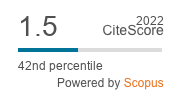Despite the size of the industry and the large amounts of money wagered on horses, little attention has been focused on the fitness of drivers of Standardbred harness racehorses. The purpose of this study was to describe the drivers’ pre-race, post-race and maximal heart rate response to multiple racing during a night of harness racing. Heart rate (HR), subjective measures of race difficulty and physical work effort, and race results were collected from eight professional Standardbred harness drivers during an official race meeting. Drivers were fitted with HR monitors prior to the start of the first race and data were continuously logged until the end of the last race. During the race meeting the drivers displayed a high mean heart rate 145±21 beats per minute. The heart rate profile during a single race demonstrated an early peak, a moderate level baseline and then increased again as the drivers took the last turn to the finish line. The best predictor of workload effort during the race was peak HR. The primary variables in explaining peak HR were final placing, horse difficulty, and pre-race HR. These data indicate that the physical work required to maintain driver position and the external stimuli associated with positioning the horse for a placing produce significant cardiovascular stress.
Research-Article
The effect of harness racing on the heart rate of professional harness racing drivers
L. Nicols Related information
1 School of Sport and Exercise, Massey University, Private Bag 11222, Palmerston North 4442, New Zealand
, C.W. Rogers Related information2 Massey Equine, Institute of Veterinary, Animal and Biomedical Sciences, Massey University, Private Bag 11222, Palmerston North 4442, New Zealand
, S. Stannard Related information1 School of Sport and Exercise, Massey University, Private Bag 11222, Palmerston North 4442, New Zealand
, J.C. Tanner Related information2 Massey Equine, Institute of Veterinary, Animal and Biomedical Sciences, Massey University, Private Bag 11222, Palmerston North 4442, New Zealand
, J. Bridges Related information3 Institute of Veterinary, Animal and Biomedical Sciences, Massey University, Private Bag 11222, Palmerston North 4442, New Zealand
Comparative Exercise Physiology: 9
(2)- Pages: 79 - 83
Published Online: August 15, 2013
Abstract
Keywords: heart rate, horseracing, Standardbred, jockey, equestrian
2023 Journal Impact Factor
0.9
source: Journal Impact Factor 2023™ from Clarivate™

Institutional Offers
For institutional orders, please contact [email protected].
Purchase Options
-
-
-
A. Byström, H.M. Clayton, E. Hernlund, M. Rhodin and A. Egenvall
-
L. Wright, E. Hernlund, C.T. Fjordbakk, B. Ytrehus, E. Law, M. Uhlhorn and M. Rhodin
-
Jane Williams and David Marlin
-
P.S. Rejeki, A. Pranoto, R.E. Prasetya and S. Sugiharto
-
A. Byström, H.M. Clayton, E. Hernlund, M. Rhodin and A. Egenvall
-
A. Andarianto, P.S. Rejeki, , A. Pranoto, T.W. Aga Seputra, and M. Miftahussurur
-
E.J. Hall and A.J. Carter
-
L. St. George, S.H. Roy, J. Richards, J. Sinclair and S.J. Hobbs



